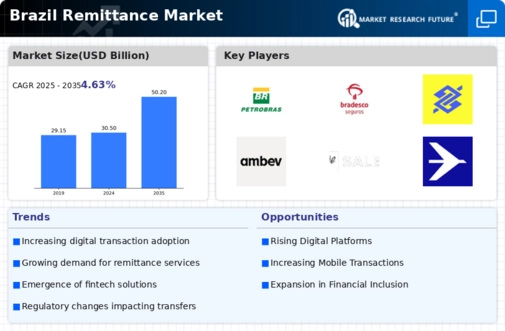The Brazil Remittance Market is characterized by a mix of traditional banking institutions and fintech companies that compete to provide efficient cross-border money transfer services. The sector has seen significant growth due to increasing migrant populations and the expanding digital landscape, which has allowed for innovative solutions tailored to the needs of both senders and receivers. Various players in the market leverage technology to enhance user experience, reduce transfer costs, and improve transaction speed.
This competitive environment drives companies to continually innovate and expand their service offerings to capture market share and retain customer loyalty.Santander plays a significant role in the Brazil Remittance Market, leveraging its extensive branch network and established reputation to cater to both individuals and businesses engaging in international money transfers. The company capitalizes on its robust digital banking platform, which facilitates user-friendly transactions and quick fund transfers. By fostering strong relationships with various remittance partners globally, Santander ensures competitive exchange rates and low fees for its customers.
Additionally, the bank's emphasis on security measures and regulatory compliance strengthens customer trust, positioning it favorably against competitors in the remittance space within Brazil.Caixa Economica Federal is another important player in the Brazil Remittance Market, known for its widespread presence across the country and a strong focus on financial inclusion. The company offers a range of services, including international remittances through its partnerships with global transfer networks, allowing customers to send and receive funds seamlessly. Caixa Economica Federal's strengths lie in its well-established brand and government backing, which provide a level of assurance to users.
The bank actively engages in promoting financial education and accessibility, enhancing its appeal to lower-income segments. Recent mergers and acquisitions have further enabled Caixa Economica Federal to expand its technological capabilities and service offerings, ensuring it remains competitive in the evolving remittance landscape of Brazil.







